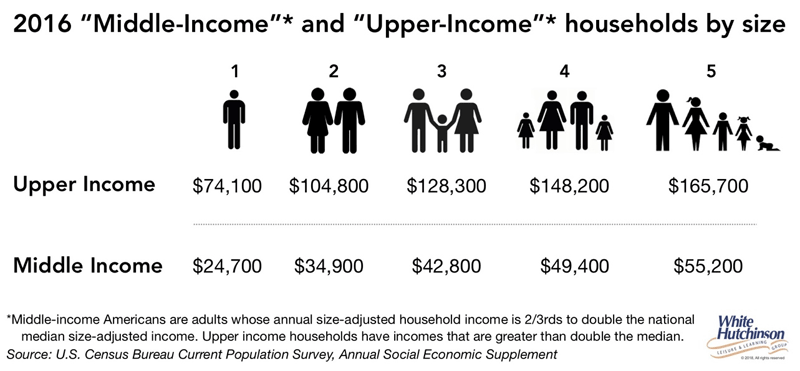
Vol. XVIII, No. 7, August 2018
- Editor's corner
- Brailling the leisure culture
- Structure changes responsible for baby bust?
- The rise of festival competition to community-based entertainment venues
- Americans' diets are diverse
- The rise of agritainment/agritourism
- The changing composition of bowlers
- Who is "middle class" and "upper income"?
- What we eat has changed
- Digital screen time on the increase
Who is "middle class" and "upper income"?
When examining demographics of a trade area for many reasons, including market feasibility for a new community leisure venues (CLV), which includes FECs, it is important to be able to tease out of all the demographic data just how large the potential target market is. The target market is never the entire population. It is typically the upper middle class who account for the large majority of all attendance and spending at CLVs.
If you lump the entire population together and then try to define the upper-middle class by a single income threshold you don't end up with the correct results. Different size families have different levels of costs for just basic necessities. A single person only has one mouth to feed, requires smaller living accommodations, etc. so needs to earn less income to be considered upper-middle class. A family with children has more mouths to feed, needs larger living accommodations and has additional expenses for children, such as schooling, so needs a much higher income.
Our company uses the below incomes to identify both middle-income households and the target upper-income demographic group.

As the chart shows, there is a wide range for the income threshold required to be considered upper-income. A family of four needs twice the income that a single person does.
Vol. XVIII, No. 7, August 2018
- Editor's corner
- Brailling the leisure culture
- Structure changes responsible for baby bust?
- The rise of festival competition to community-based entertainment venues
- Americans' diets are diverse
- The rise of agritainment/agritourism
- The changing composition of bowlers
- Who is "middle class" and "upper income"?
- What we eat has changed
- Digital screen time on the increase


